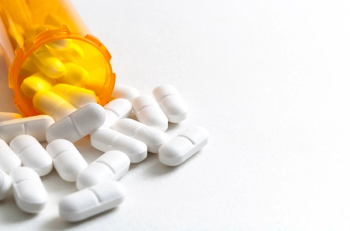
At-home testing essential for all diabetes patients
Home testing devices
At-home testing essential for all diabetes patients
By Martin Sipkoff, a Gettysburg, Pa.-based healthcare writer
Writer Miriam Tucker has had Type 1 diabetes for 30 years. She said use of a home testing device to measure her blood sugar is "absolutely essential. I couldn't survive without it."
Although most diabetes patients don't require the four meter readings and insulin injections a day that keep her alive, Tucker regrets that more patients don't carefully monitor their blood sugar at home. "Even people with Type 2, who are on pills instead of insulin, can benefit from knowing their daily blood sugar level, keeping a record, and reporting that information to their doctors," she said.
Diabetes experts agree with Tucker: Home testing devices can keep virtually all diabetes patients healthier and more of them should be using these devices. The complications of diabetes could be dramatically reduced if patients maintained adequate control of their disorder, adjusting their diet and exercise routine to the results of home monitoring, according to the American Diabetes Association. ADA and other professional organizations say pharmacists should play a greater role in encouraging the appropriate use of these devices.
Many diabetes patients need encouragement. Home testing can be a daunting process, especially at first, although manufacturers of the approximately two dozen meters on the market are trying to make the procedure simpler and less painful. About one in 10 diabetes patients have Type 1 diabetes, what used to be called "juvenile diabetes" because it usually begins at a young age. For them, testing requires pricking a finger, arm, or thigh with a lancet as often as four times a day, placing a blood drop on a special testing strip, inserting the strip in a meter, waiting for the results, recording the results (although most meters maintain that information), and sometimes adjusting an insulin dose based on the readings. The higher the blood glucose, the more insulin requireda calculation process some patients find difficult.
Patients with Type 2 diabetes follow the same procedure but less frequently. Patients taking pills instead of insulin shotsthe case with the majority of Type 2 patientsdon't adjust their dosage but can report the data they collect to their physicians for possible prescription adjustment. As troublesome and painful as it may be, the effort is worth it, according to ADA and others. "It is painful," said Tucker, "but you get used to it."
The effect of increased home testing on healthcare costs is also significant because there are a lot of diabetes patients, although estimates vary as to how many. ADA believes about 17 million Americans have diabetes, but five million of them don't know it.
Regardless of how many people suffer from the condition, the number of diabetes patients who practice self-monitoring of blood glucose (SMBG) is comparatively small. Only about 2.5 million patients use one the available home testing devices, according to William Alto, M.D., associate professor of community and family medicine and diabetes specialist in the Maine-Dartmouth Family Practice Residency program in Augusta, Maine. That means that as many as 85% of the nation's diagnosed diabetes patients do not use home monitoring devices to monitor their blood sugar, according to ADA.
ADA officials call that number dangerous and unfortunate. "SMBG is recommended for all insulin-treated patients with diabetes, and it may be desirable in patients treated with sulfonylureas or other insulin secretagogues and in all patients not achieving glycemic goals," states ADA's position paper on home testing.
ADA experts acknowledge that home testing isn't perfect. An ADA panel concluded several years ago that up to 50% of SMBG determinations might vary by more than 20% from a true value. But ADA experts believe that in monitoring blood sugar, imperfect information is better than none. "The knowledge is available to prevent a lot of suffering," said Richard Kern, Ph.D., the ADA's chief scientific and medical officer. "Home testing is part of empowering people to take charge of their health and ensure they have the proper resources to manage their disease."
Potential errors notwithstanding, ADA is unwavering in its support for SMBG and calls on insurers to recognize its value. "Given the importance of SMBG to diabetes care, government, third-party payers, and others should strive to make the procedure readily accessible and affordable for all patients who require it," states ADA. "Thus, SMBG should be an important component of any healthcare benefits package." Many insurers apparently recognize the cost-effectiveness of home testing because more than 75%, including Medicare, pay most of the expense.
Knowledge about the importance of SMBG and its methodology appears to be a bigger problem than cost, however. Patientsespecially Type 2 patientsgenerally fail to appreciate the value of SMBG. And most peopleincluding many elderly patients, who make up the majority of diabetes populationhave no idea how to proceed.
"Diabetes is a very complex disease to manage, and the proper care requires significant lifestyle changes on the part of the patient," said Keith Campbell, Pharm.D., assistant professor of pharmacy practice at Washington State University College of Pharmacy in Spokane, who has studied diabetes treatment among the elderly. "Education is necessary to ensure that the patient takes ownership and responsibility for high-quality diabetes care. Patients must understand their role," he said.
And so should pharmacists. Pharmacists should help identify appropriate SMBG candidates, help patients choose an appropriate blood glucose monitor, teach the correct technique for obtaining a blood sample and testing the sample on an individual's meter, and teach proper care of a meter (including cleaning, storage, quality control, and maintenance) and proper SMBG scheduling.
There are two basic types of meters: color reflectance meters and electrochemical technology meters. Both involve blood samples and meters to read the samples. Manufacturers say they are developing systems for noninvasive blood glucose monitoring, but so far none is available. A new laser device that obtains blood by vaporizing a tiny hole in the skin was judged by Consumer Reports in an October 2001 article about SMBG technologies to be less convenient and no less painful than conventional lancets.
Meter choice should focus on several key issues: visual and/or voice modularity, portability, expense, cleaning and maintenance requirements, quality control requirements, calibration requirements, blood sample size, memory, ease of use, self-timing, availability of a toll-free help line, and overnight delivery of a new or replacement meter.
All meters require some form of calibration or resetting when new test strips are used. Many meters require some manual adjustments in the process of adjusting to a new lot of strips, including setting a code or inserting a chip or strip to recalibrate. "Misunderstanding the calibration step can lead to erroneous results," said John R. White, Pharm.D., associate professor of pharmacy practice at Washington State University College of Pharmacy. "These can lead to underdosing or overdosing of insulin or other medication. Ease of calibration may ensure that the patient correctly calibrates the meter and obtains accurate results," said White. He added that patients on intensive insulin therapy may benefit from a blood glucose monitoring system with a detailed memory, including time, date, activity, and meal timing.
Meter cost varies and may be a major consideration for some patients, but "consideration of cost should not supersede other concerns, because the meter will be of little value if the patient is unable to operate it correctly," according to White. Ongoing expense of test strips is also a concern for some patients.
Some meters require more skill to clean and maintain than others, and some will prompt users to perform maintenance if a problem is detected. In many meters, the memory feature allows both the patient and the practitioner to evaluate previous blood glucose values and time of testing. "It also rules out the possibility of individuals fixing their numbers or reporting values they believe the practitioner wants to see," noted White.
According to Consumer Reports, the design of newer meters makes them generally easier to use and maintain than earlier models. The technology appears to be advancing in convenience, accuracy, and minimizing the pain of taking blood samples. The market is probably driven by the fact that ADA projects the number of diabetes patients to double within 25 years as baby boomers age. Worldwide, SMBG represents a $2.5 billion annual business, growing at about 11% a year, according to a 1998 study.
One example of new technology was approved by the Food & Drug Administration last March: GlucoWatch, by Cygnus Inc. of Redwood City, Calif., a combination wristwatch and glucose meter that uses a weak electric current to measure glucose in the fluid within the skin. The device displays glucose levels every 20 minutes and sounds an alarm if readings go dangerously high or low.
But in initial studies submitted to the FDA, measurements differed from finger-prick results by more than 30% a quarter of the time. And the device doesn't eliminate pain. The FDA approved it to supplement fingerstick meters, and results must be checked against a conventional meter before changing insulin dosages.
A blood glucose monitor, presented on June 15 at the ADA 62nd Scientific Sessions in San Francisco, is completely noninvasive. Developed by an Israeli firm, it is based on occlusion technology, a form of light measurement "where the cessation of blood flow in the finger triggers a change over time of the optical characteristics of blood," said Ohad Cohen, from Chaim Sheba Medical Center in Tel Hashomer, Israel, who helped develop the technology. He and his colleagues told the ADA session their technology has tested as accurately as blood samplingwith no pain.
Other potential advances not yet on the market include forearm patches that draw glucose through the skin, with an associated meter that would analyze the results, and a meter that uses infrared light to gauge blood glucose levels. Manufacturers are also developing home devices that help avoid the complications of diabetes. Footwear is being developed that monitors the skin temperature of feet to reduce complications, including ulcers, fractures, and amputations. Another new test measures blood beta-hydroxybutyrate, reducing the need for hospitalization for ketosis.
It may or may not be a brave new world for home testing for diabetes patients, but one thing is certain, said Tucker: "More people should do this. I tell people that all the time."
Martin Sipkoff. At-home testing essential for all diabetes patients. Drug Topics 2002;24:28s.
Newsletter
Pharmacy practice is always changing. Stay ahead of the curve with the Drug Topics newsletter and get the latest drug information, industry trends, and patient care tips.


















































































































